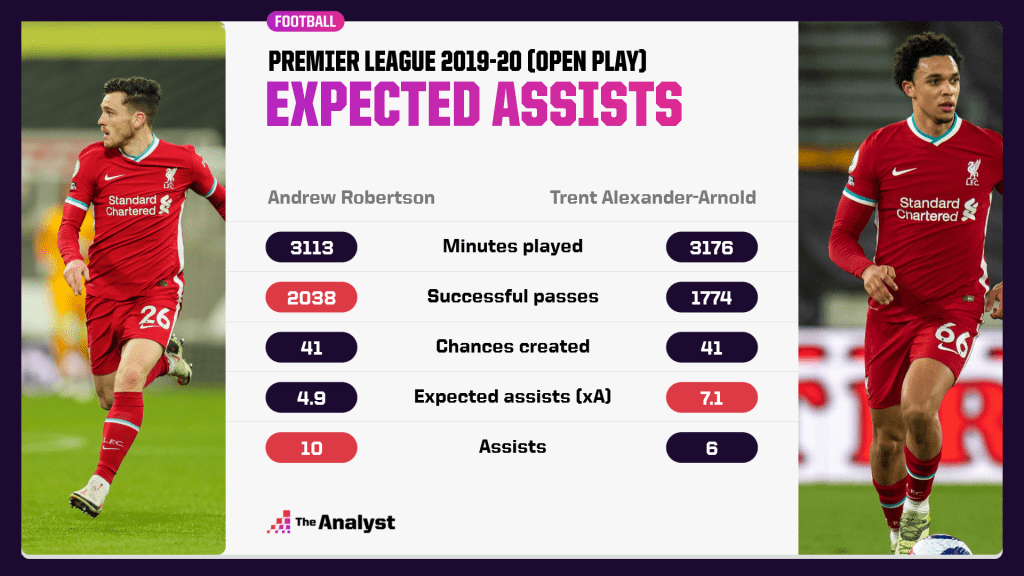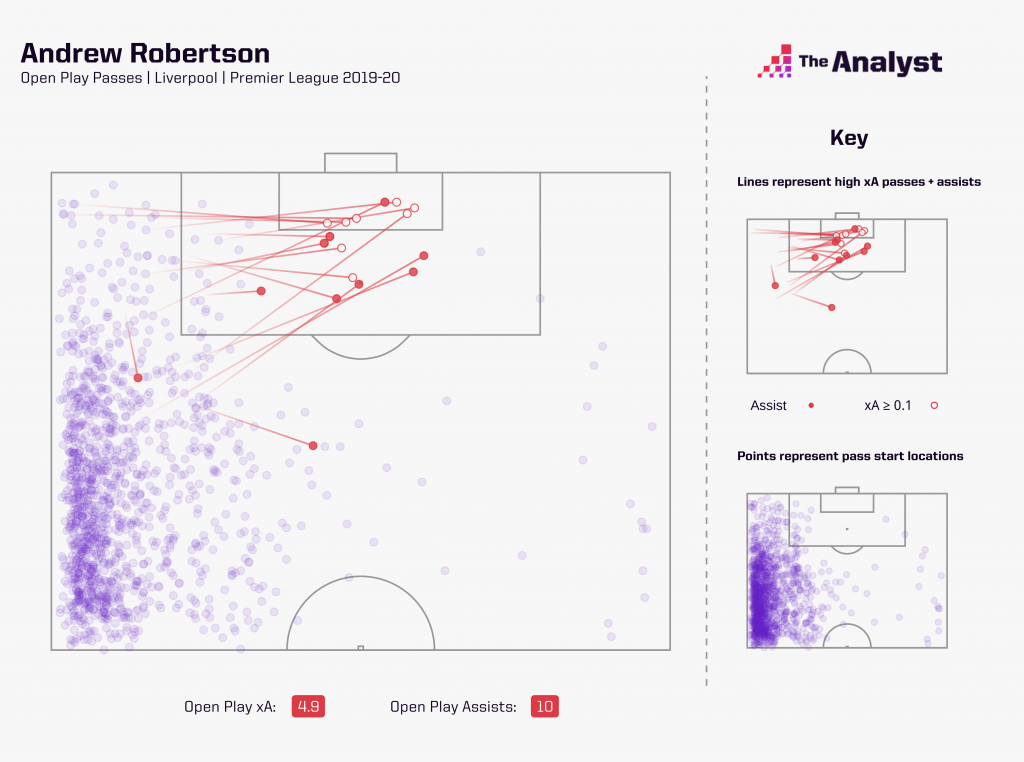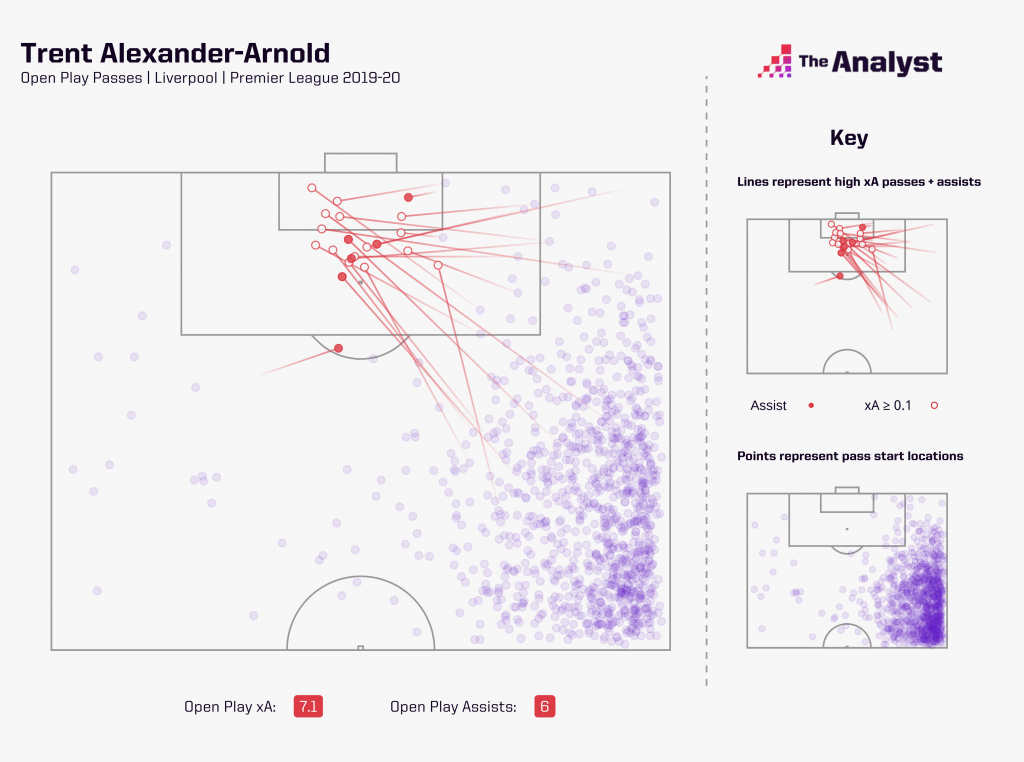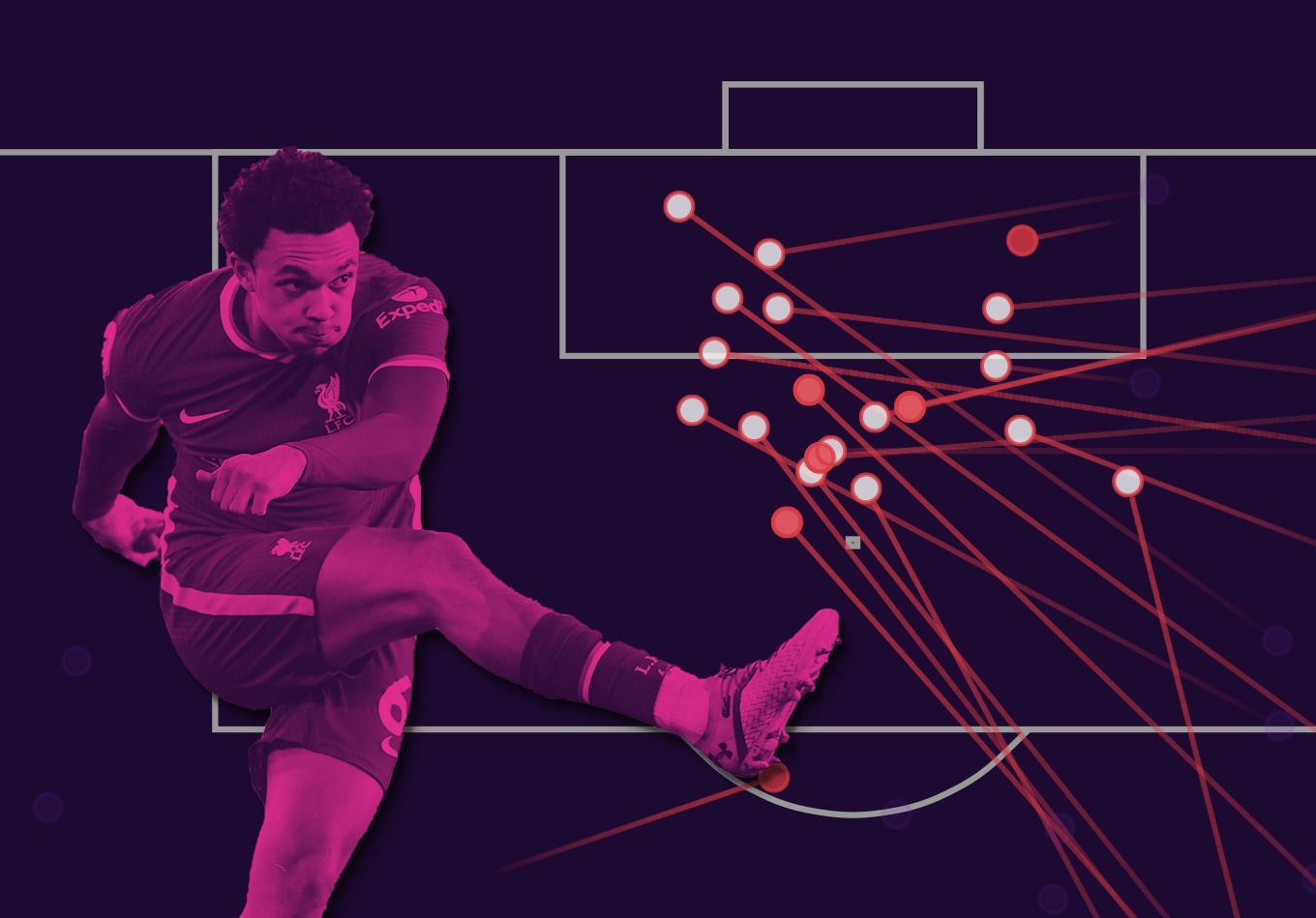Football players are largely judged on their ability to score goals or win points for their teams. As a creative midfielder, your most productive output is likely to come in the form of chances created or assists. The issue is that these metrics are reliant on the actions of your teammates and not necessarily reflective of the quality of your pass. If your teammate doesn’t shoot, you don’t get a chance created. If your teammate doesn’t score, you won’t get an assist.
It is also clear that not all key passes create the same quality of scoring opportunity. A pass across the six yard box to your striker is more likely to lead to a goal than a short pass outside the penalty area where the receiver shoots from range. So, how do we better value players for their ability to create these goal scoring opportunities?
With Stats Perform’s expected assists (xA) model, we can complement quantity with quality and gain a deeper level of insight to a player’s passes that reflects their value beyond the counts of chances created.
What Are Expected Assists?
Stats Perform’s expected assists (xA) model measures the likelihood that a given pass will become a goal assist. The model rewards players who pass into dangerous areas, regardless of whether the receiver takes a shot or not. xA is measured on a scale between zero and one, where zero represents a pass that will never result in an assist and one represents a pass that the receiver would be expected to score from every single time.
There are similar outputs that value a player’s chance creation by taking the xG value from their key passes, but these do not isolate the contribution of the creator. The xG from key passes method is reliant on the receiver taking a shot and don’t account for what the receiver does between receiving the pass and taking the shot. Using xG from key passes does not represent the value of all passes nor does it represent the value that the pass initially provided. Expected assists, on the other hand, does both.
An expected assist value is assigned for every completed pass in Stats Perform’s detailed event data given that every completed pass can indeed become an assist (as teammates of Lionel Messi know only too well). Adding up a player or team’s expected assists gives us an indication of how many assists they should have had, based on the quality of their successful passes.
How Do We Calculate Expected Assists?
Stats Perform’s expected assists model is built using a logistic regression model that is powered by hundreds of thousands of passes from our historical Opta data and incorporates a number of variables that affect the likelihood of a given pass becoming an assist, the most important of which are listed below:
- Type of pass (e.g., cross, non-cross, header, through ball etc)
- Pattern of play (e.g., open play, corner, free kick, throw-in etc)
- Location of where the pass is received
- Location of where pass is made from
- Distance of the pass
The pattern of play and the type of pass played are particularly important to the likelihood of a pass becoming an assist and so there are sub models for the different interactions between these variables.
How Can We Use Expected Assists?
Two of the most creative players in the Premier League 2019-20 season were the title-winning full-backs at Liverpool. Only Manchester City’s Kevin De Bruyne registered more assists (20) than Trent Alexander-Arnold (13) and Andy Robertson (12). So, how can expected assists help us distinguish between their outputs?
If we compare the full-backs’ creativity in open play, we find that they both created 41 open play chances. Despite ranking behind his teammate in total assists, it was actually the Scottish left-back that led the way over his English teammate (6) for assists in open play (10).

While these traditional metrics can give us an idea of their creativity, with xA we can now measure the quality of all of their passes. Both players created the same number of chances, but Alexander-Arnold made passes that were more likely to result in assists, completing passes that would be expected to result in over five assists (7.1 xA) compared to nearly five for Robertson (4.9 xA).
As well as being able to value the quality of their passes, we can also understand their performances relative to expectation. Despite having the higher open play xA value, Alexander-Arnold actually registered fewer open play assists (six) than Robertson (10). You can see that Alexander-Arnold underperformed expectation whilst Andrew Robertson overperformed. Having seen the competitiveness between the two full-backs on the topic, we can be sure he let him know too.


In their xA maps, it is evident that Robertson registered some assists from passes into areas where the receivers still had a lot to do to score. On the other hand, Trent Alexander-Arnold might consider himself unlucky that more of his high xA crosses to the back post weren’t converted into goals.
Assigning Full Credit to Creators
Advanced metrics have become more prevalent in football over recent years with both players and managers talking openly about them almost as much as the pundits on major broadcasters. Expected assists are no different, a metric that is both intuitive and applicable.
Norwich City’s sporting director, Stuart Webber, discussed how they used xA in the recruitment of arguably their best player over the last few seasons, Emiliano Buendia. While his assist numbers weren’t substantial when he was playing in the Spanish second division, their analysts used expected assists as one of the metrics to recognise the underlying creativity of the Argentine.
The player with the most chances created in Europe’s top five leagues, at the time of writing, is another fan of the metric. Aston Villa’s Jack Grealish spoke about how he uses his expected assists total to compare himself to other players in his position, with his Premier League rival Kevin De Bruyne a particular point of reference.
In a similar manner to the ever-popular expected goals metric, expected assists allow us to value the underlying contributions of creative players that traditional football metrics can’t measure effectively. It is the next step in providing a more informed framework that values the creativity of all passes, rather than just those that directly result in a shot or goal. If it’s good enough for Grealish, we must be doing something right.
